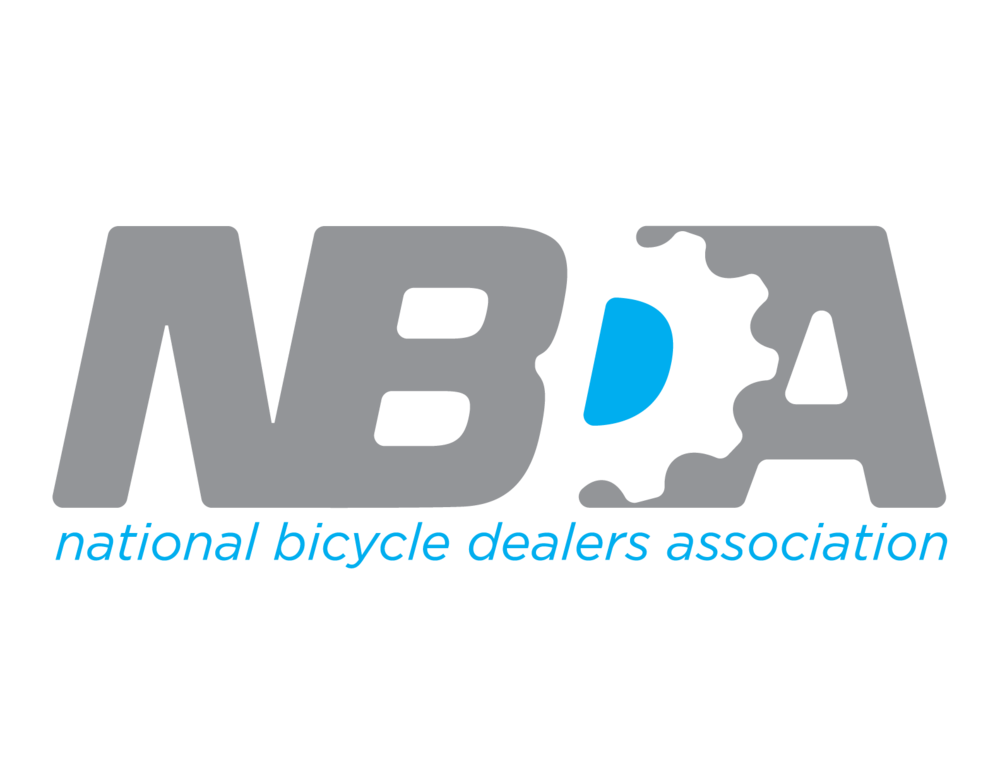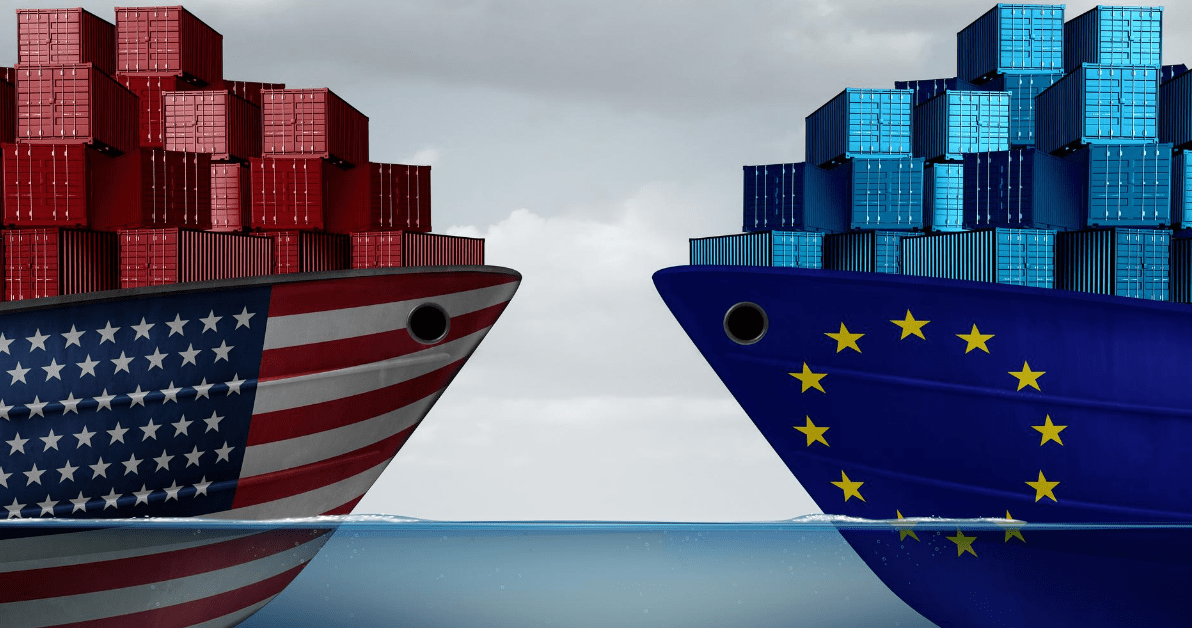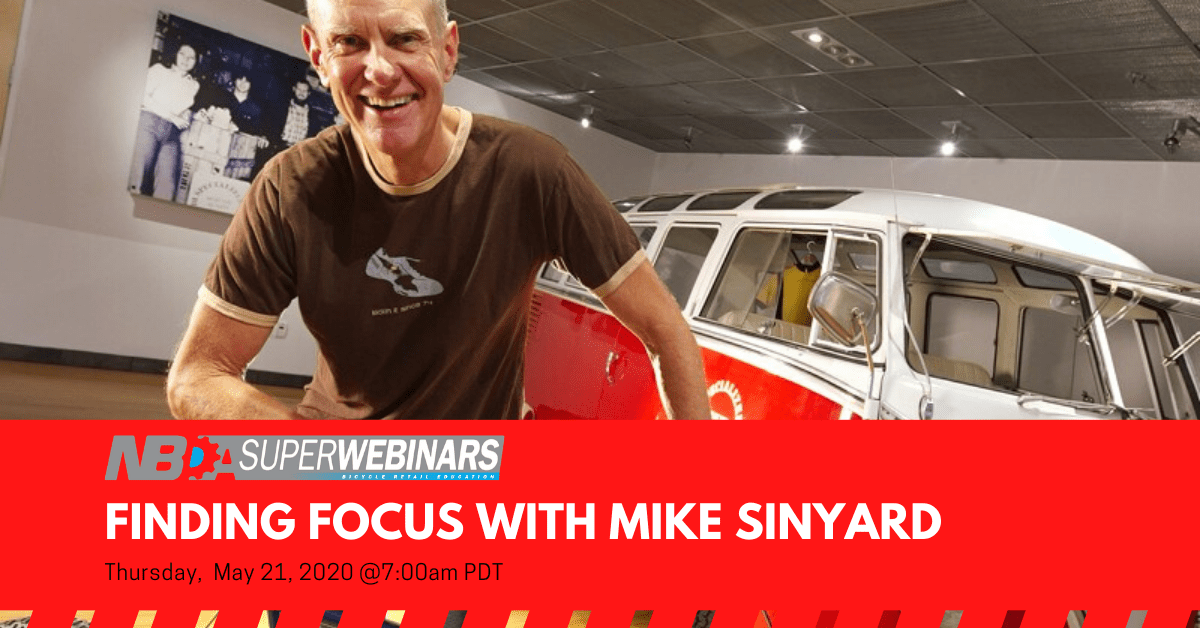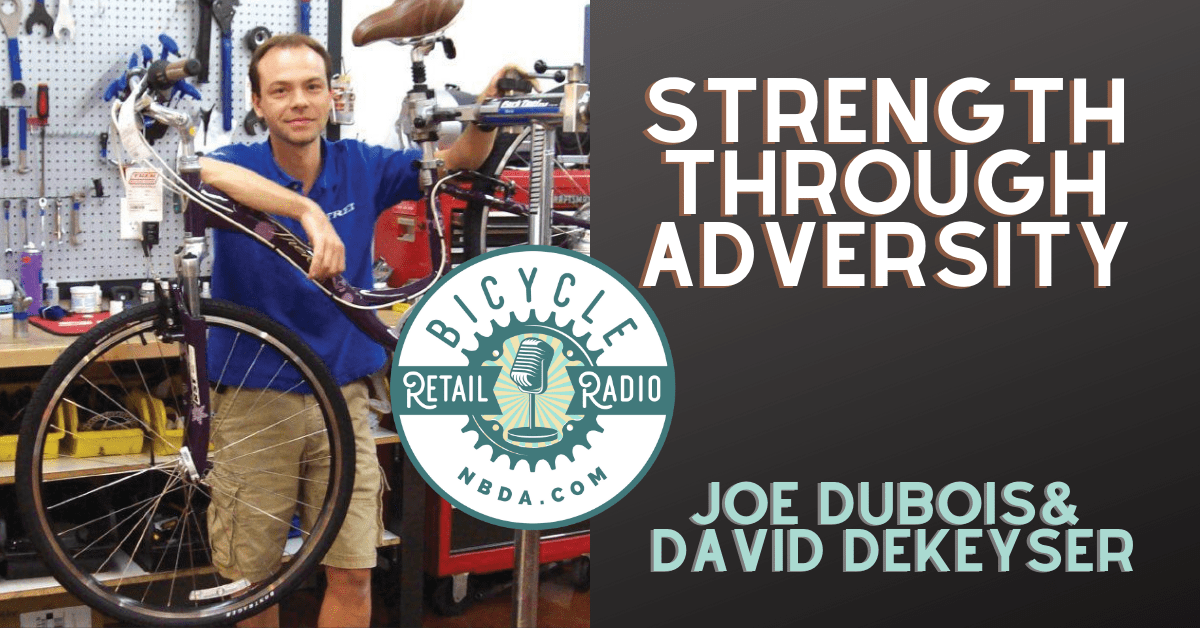Q+A: The Fresh Batch
Bruno Maier discusses Batch Bicycles, the new IBD-only brand from Huffy
Words & Interview by Peter Koch
Back in January of 2017, Huffy president and CEO Bill Smith stood in front of a room packed with bike shop owners and their suppliers at the IBD Summit and made a pitch for them to become warranty service centers for Huffy. It was a bold move, considering the fact that many shop owners have long considered Huffy—with its mass-market distribution via big-box and online retail channels—to be among their chief competition, and have refused to work on their bicycles.
But Smith said he didn’t see it that way. “No other bicycle brand puts more new riders on bikes every year than Huffy,” he told the audience. “We are a gateway brand, an entry point,” he continued, adding that many more enthusiastic riders inevitably go on to buy higher-end bikes from IBDs. His point, in the end, was that his company doesn’t compete with IBDs or the brands they carry (“No one is going to say, ‘I was thinking of buying an Audi A6, but then I saw a deal on a Camry so I bought that.’ It doesn’t work that way.”), though they’re all part of the same flat industry. What’s more, he said, he was looking for more ways to cooperate with IBDs to overcome broad “social and economic and demographic” factors that have contributed to stagnant bike unit sales (of around 17.5 million bikes annually) in the last decade. The Huffy Service Centers were just intended to be the first step. “We’d like to send you some of our customers,” he said.
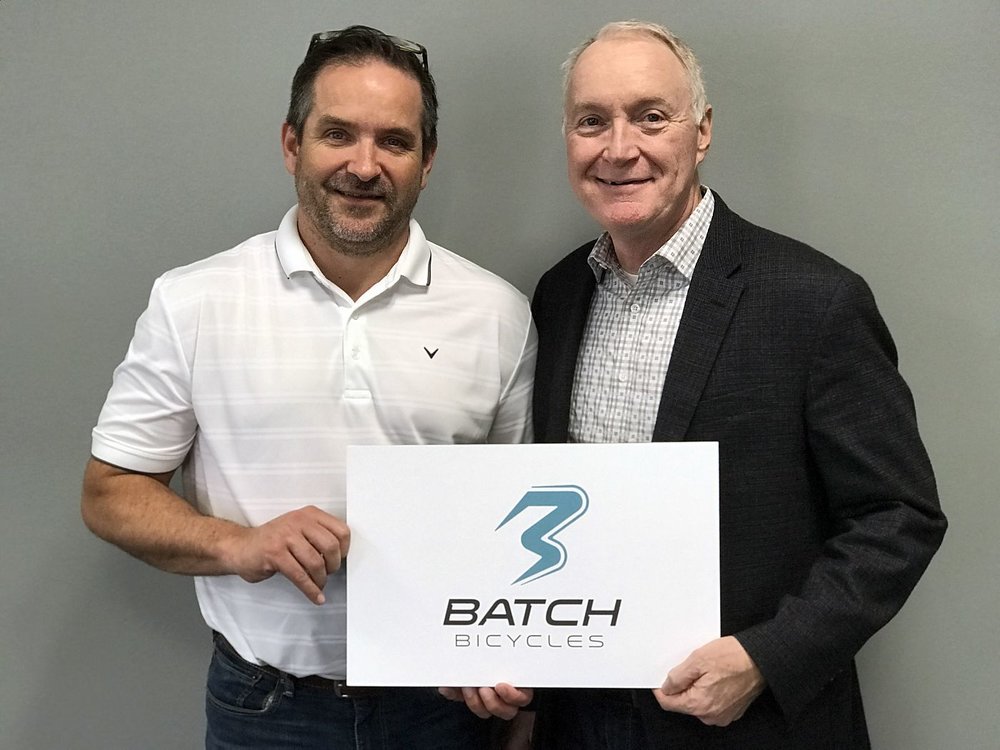
Bruno Maier (left) with Huffy CEO Bill Smith
Smith must’ve been convincing, because his presentation sparked a series of conversations with independent bike dealers that, earlier this Spring, led to Huffy announcing a new, IBD-only bike line, Batch Bicycles, whose products will be made with better materials and components than their typical big-box fare. The idea behind Batch Bicycles, Smith says, is to target a significant market of underserved consumers who want bicycles priced in the “white space” that exists between the offerings of big-box retailers and specialty stores. With its significant buying power, lack of overhead and century-plus experience at sourcing and building value-oriented bikes, Huffy believes it’s in a unique position to leverage its strengths and fill that niche while offering dealers great margins and a simpler business model that doesn’t require minimum buys, presale commitments or complex discount structures.
Details are still forthcoming, but the initial line, which will be launched this September at Interbike, will include a handful of models—a mountain bike, a commuter, a comfort bike, a cruiser, and three sizes of kids’ bikes, including a 10-inch balance bike—priced between $150 and $400, and spec’d with lightweight aluminum frames and Shimano components.
To get a more detailed look at what Batch Bicycles will offer consumers and IBDs, Outspokin’ chatted with Bruno Maier, a 25-year industry veteran (Huffy, Pacific Cycle, Cycling Sports Group, Bikes Belong and RockyMounts) who’s overseeing the launch of Batch Bicycles. In this Q+A, Maier outlines the strategy behind the new lines of bikes, how it’s different from traditional IBD brands, as well as how it will fit into the IBD marketplace.
How did Bill Smith’s conversations with dealers lead to Batch Bicycles being developed? After Bill announced the Huffy Service Centers program at the IBD Summit, dealers began signing up at an accelerated pace. Many of them reached out to Bill by phone, to say they’d be interested in a deeper relationship. What Bill and others here at Huffy realized, then, is that there might be an opportunity to move some of those customers who’d bought bikes in the mass market into nicer, higher-quality bikes. If we could leverage our expertise—we’re good at sourcing bicycles and building quality bikes at a good value—and hit key price points from $150 to $400, we could meet the expectations of somebody who’s been buying bikes at a mass retailer but now wants a little more service and better quality. The added benefit for our customers is they go to a dealer and get professional assembly, as well as a bike fitted to them, plus they can buy all the accessories they need to make their ride more safe and enjoyable.
Why is now the right time for a brand like Batch Bicycles? If you look at a lot of the research that’s coming out about consumers—specifically when it comes to Millennials and Gen Z—it says that they’re not necessarily looking for a super high-end product. Rather, they tend to be buying products that are good quality but don’t break the bank and allow them to participate in a lot of other activities, as well. So we felt that, by providing these lower price points, we have a good opportunity to attract more Millennial and Gen Z customers into the bike shop, rather than pushing them towards Dick’s Sporting Goods, Wal-Mart or Amazon.
What kind of business motivations does Huffy have for creating Batch? From a sheer dollars and cents standpoint, we’re always looking to expand and grow the business. Independent bike dealers have long represented an untapped market for us, and this is a way for us to offer a product to anywhere from 3,000 and 6,000 new retailers. That’s a lot of retailers who we can build a relationship with, and we can offer them a great product with good margins and good value, and also create a service center for the 5-6 million bikes that we sell each year on the mass market. It’s a way for us to build a much deeper relationship and hopefully generate some revenue.
Has something changed in the big-box and online markets that’s pushing you to explore other channels? As far as online markets are concerned, we’ve not had the attention and focus on Amazon that we’ve had in big-box retailers. We’re probably a little late to the game, but as the market shifts, we’re adjusting our behavior to provide unique solutions to Amazon that’ll help us grow our business with them. But those efforts are in regard to Huffy, and won’t compete with the Batch Bicycles brand.
More broadly, though, I’d say that the business as a whole has changed. We find more competition in our categories, but not from other bike vendors. It’s really from things like cell phones, video games, managed parental oversight of time, the increase in team sports commitments—all of those things take away disposable income from parents, take away time that children and parents can devote to cycling. All of those areas have not only had an impact on the mass-market bike business but on the independent dealer market, as well.
And so we’ve seen the bike market, as a whole, struggle for the last several years. We may be selling close to the same number of bikes that we’ve sold year-over-year, but we’ve been selling the same number of bikes in America for as long as I can remember—at least a decade—even as the population has grown significantly [by 24.5 million people, or 8.13%]. So we’re not maintaining the growth that we should expect, given the population growth. And that’s one of the things that’s driving our interest in expanding into the dealer market. We want to grow. So, if the market’s not going to grow as a whole, we’ve got to be more aggressive in how we go after our piece of the pie. And, if we want to grow our market share, we’ve got to be able to sell bikes in the mass-market, online, and through dealers. To do that, we’ve got to meet the needs of dealers—provide them something unique, provide them good value, provide them best-in-class margins—and we’re making those changes internally so that we can achieve those goals.
Children’s bikes are one of the fastest-growing segments, but IBDs are responsible for just a fraction of those sold annually. Do you think Batch can change that? There’s so much competing for kids’ time and parents’ resources in today’s world, that I think it’s hard for parents to justify spending big bucks at the dealer on a Trek or Specialized children’s bike. They’re great quality, of course, and something that’ll last a long time, but our bikes will provide equivalent value at a better price point.
On the big-box end of the spectrum, there are a lot of bikes in the $100-$130 range that are made of steel and have plastic parts. Our products will be more like $175, but they’ll be lighter-weight aluminum, and will have better quality components, so they’ll be better bikes across the board. And you know the difference between riding a cheap, inexpensive bike and really good quality bike—it’s like night and day. If you can start those really good experiences off at a young age, it’s only going to build that love of cycling early on.
We’re also going to be able to leverage some of our licensing relationships—we’re one of Disney’s largest licensers—as well. So we’re trying to tie in all of the things that we bring to the table to help service that dealer market, and help those dealers capture every sale that they can. So, yes, I think we’ll be able to bring some of those kids’ sales back.
How do you see brick-and-mortar retailers fitting into today’s retail landscape, where consumers drive how we sell to them? I think that you’re going to see what’s been called “the revenge of the mom-and-pop retailer.” Because everything has become so impersonal and online, people are missing that old-fashioned service. And you even see that in mass-retail, where Target and Wal-Mart are trying to provide personal shoppers and pick-up at the front door; it’s all about the service that can be delivered. I think that’s the advantage that IBDs have over everyone else in the bicycle market, is they can provide specialized services, they can provide guidance, they can provide insight and education. And, most importantly, they provide that expert assembly, and fitting to the bike—because we all know that fit and the quality of the ride make the difference between falling in love with bicycling or not. I think we’ll see strength in independent retailers. It’s going to take some time, though, and they’re going to have to compete with the online onslaught, but over time they’ll have the advantage.
How will Batch bikes differ from Huffy? We’re changing the quality level of the product, offering aluminum frames and cranks where Huffy bikes are steel, and upgrading to aluminum rims and stainless steel spokes. We’re improving the packaging, so we can ship one or two bikes together, rather than shipping a full truckload of bikes.
We’re also doing things to provide better service to the dealers, to make it easier for them to order. They can order 100 bikes if they want, or they can order one bike at a time; we’re not going to penalize them for that. We’re offering them very good margins for their retail, and we’re monitoring retail channels to make sure nobody’s undercutting them and taking away their margin.
We’re also making some long-term investments in our own website and our own online capabilities, so we can drive consumers to those retailers. So, for instance, consumers will someday be able to buy their bike online from our website, but the only way to pick it up is from a local dealer, and the dealer will still get full margin on the sale. But that’s Phase 2, coming probably within a year or so. The point is that we’re making investments to ensure that business is all about driving revenue and margin for the dealer because that’s where the Batch consumer is going to get the best service.
How does the Batch Bicycles business model differ from that of traditional bike companies?
We’re not going to have model years, so that should make a huge difference for dealers. It’s a difficult position they’re put in each year when new bike platforms are introduced as early as June. As a dealer, how are you able to sell a $5,000 mountain bike at full price, when the customer’s already seen the great new model that’s coming out 30 days from now? It makes the manufacturers’ business model more complicated, too. So, not having model years will simplify our business model, and give us some flexibility to adjust product when it’s not selling. If bikes are selling, though, we’ll continue to make them until dealers tell us a change is required.
Also, we’re not making huge investments into a large sales force, professional racing teams, catalogs, and floor financing, so those costs aren’t worked into our business model. We’re using technology to make ordering bikes easier—we won’t need to 30 or 40 sales guys in the field—so dealers can order what they want when they want it. So, overall, we’ll be more efficient and have lower operating costs than the high-end market players. That’ll allow us to offer really good margins to dealers, and maintain those margins. We’re primed to offer between 40 and 50 points across the board, consistently. We want our products to be profit-drivers for IBDs.
How do you see this changing typical IBD sales when it comes to lower-price, entry-level bikes? From our standpoint, it’s a way for them to draw new customers into their stores. For the customer that comes in, browses and says, ‘I don’t want to spend this much money,’ now maybe they’ve got a product that can capture that sale. We look at it as an extension of what they’re already doing and hope that it only enhances their business model.
Is there anything else you’d like to add? The words that we use to describe Batch Bicycles are Simple, Honest, and True. The goal of our whole business model is to make it as Simple as possible, so dealers don’t have any issue carrying our product and they know exactly what to expect. As far as being Honest, we’re going to provide the margins that we say we are, in exactly the way we say we’re going to. We understand that we’ve got to prove that Simple, Honest, True tagline by living it, and until we do, there’s always going to be skepticism, but it’s what we’re hanging our hat on.
 The NBDA has been here since 1946, representing and empowering specialty bicycle dealers in the United States through education, communications, research, advocacy, member discount programs, and promotional opportunities. As shops are facing never-before-seen circumstances, these resources offer a lifeline. Together, we will weather this. We at the NBDA will not waver in our commitment to serving our members even during this challenging time—but we need your support.
The NBDA has been here since 1946, representing and empowering specialty bicycle dealers in the United States through education, communications, research, advocacy, member discount programs, and promotional opportunities. As shops are facing never-before-seen circumstances, these resources offer a lifeline. Together, we will weather this. We at the NBDA will not waver in our commitment to serving our members even during this challenging time—but we need your support.
Now is the time to become a member as we join together to make one another stronger. Whether you’re a retailer or an industry partner, your membership in the NBDA is one of the best investments you’ll make this year.
Learn more about the benefits of being a member and join now.
